Green Bay, WI Pollen and Allergy Report for Summer 2023
Pollen Allergy Trends in Green Bay, WI
When is pollen lowest in Green Bay, WI?

February
Lowest month total PPM
Avg. PPM
When is pollen highest in Green Bay, WI?

May
Highest month total PPM
Avg. PPM
How does pollen in Green Bay, WI compare to Wisconsin?
Green Bay has a lower average PPM than the state of Wisconsin.
Green Bay yearly avg PPM:
Wisconsin yearly avg PPM:
How does pollen in Green Bay, WI compare to the USA?
Green Bay has a higher average PPM than the USA.
Green Bay yearly avg PPM:
USA yearly avg PPM:
Is pollen worse this year in Green Bay, WI?
Spring 2023 was worse than spring 2022.
Spring 2023 PPM:
Spring 2022 PPM:
Average PPM in Green Bay, WI
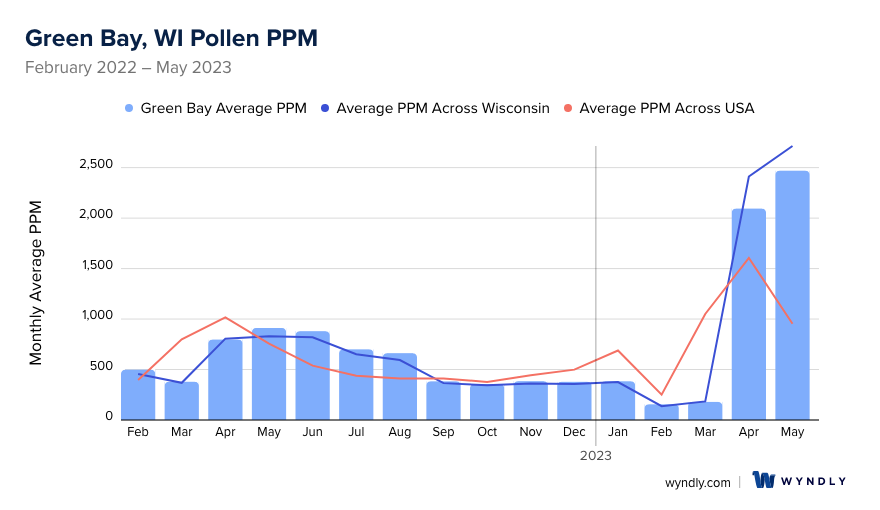
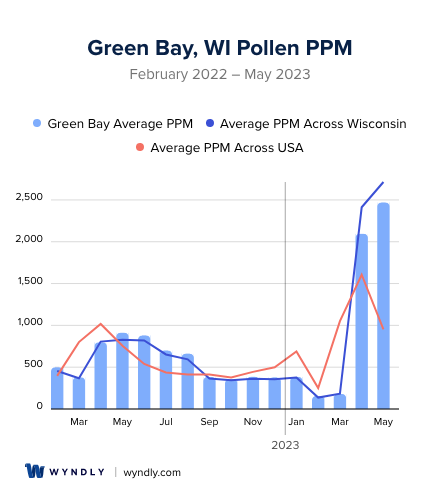
Green Bay, WI Pollen and Allergy Breakdown by Month
Grass
When is grass pollen highest in Green Bay, WI?
June has the highest grass pollen in Green Bay, WI with an average PPM of
When is grass pollen lowest in Green Bay, WI?
October has the lowest grass pollen in Green Bay, WI with an average PPM of
Tree
When is tree pollen highest in Green Bay, WI?
April has the highest tree pollen in Green Bay, WI with an average PPM of
When is tree pollen lowest in Green Bay, WI?
October has the lowest tree pollen in Green Bay, WI with an average PPM of
Weed
When is weed pollen highest in Green Bay, WI?
May has the highest weed pollen in Green Bay, WI with an average PPM of
When is weed pollen lowest in Green Bay, WI?
February has the lowest weed pollen in Green Bay, WI with an average PPM of
Green Bay, WI Pollen Monthly Breakdown by Pollen Type
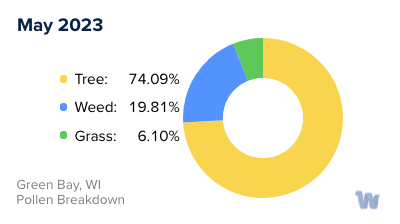
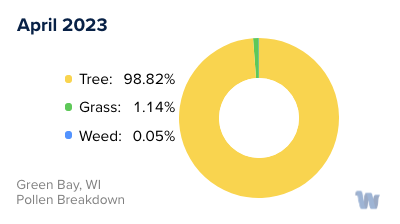
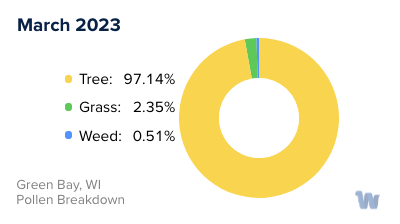
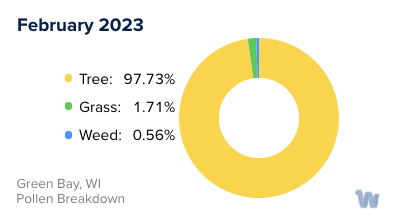
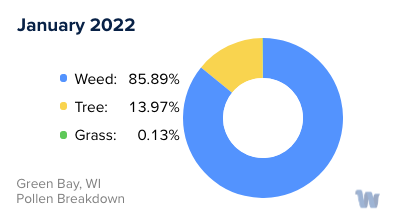
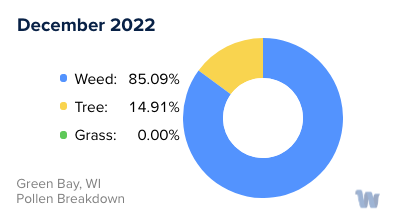
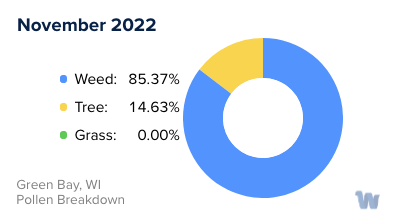
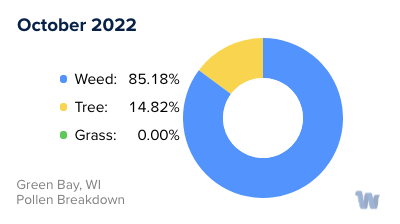
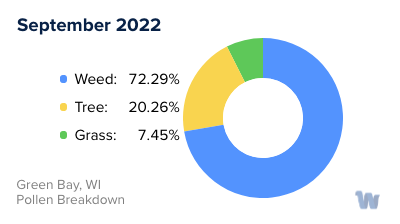
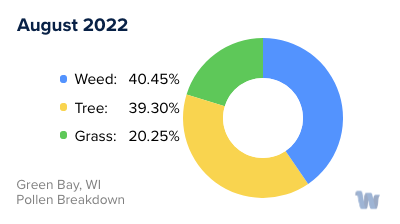
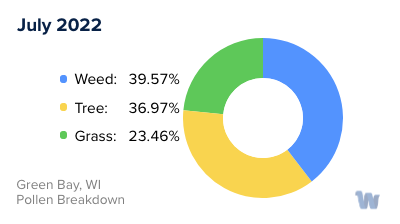
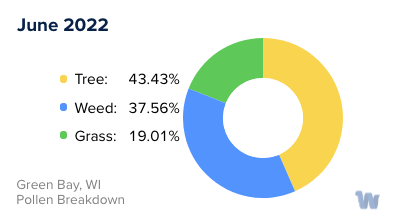
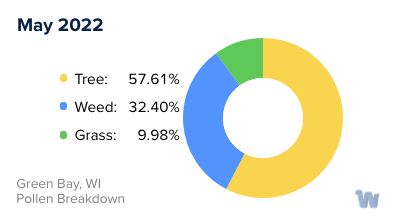
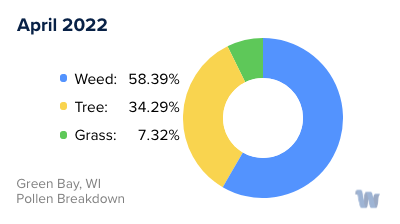
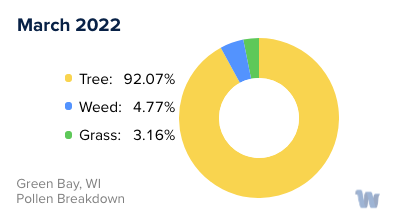
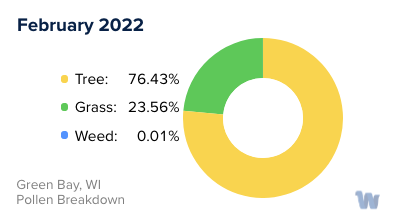
Pollen and Hay Fever in Green Bay, WI
In the picturesque city of Green Bay, Wisconsin, the changing of the seasons brings not just the vibrant hues of fall and the bloom of spring, but also a less welcome guest: pollen. For many residents, this microscopic substance can trigger an array of allergic reactions, commonly known as hay fever or pollen allergies.
Pollen allergies in Green Bay are mainly caused by three types of plants: trees, grasses, and weeds. Each plant type releases its pollen at different times of the year, leading to a seasonal pattern of allergies. In the spring, the key culprits are trees. Oak, cedar, birch, and maple are just a few of the types of trees in Green Bay that release pollen, setting off a symphony of sneezes.
As spring transitions into summer, the source of pollen shifts from trees to grasses. The warm summer months are when grasses like Kentucky bluegrass, ryegrass, and timothy grass come into their pollen-producing phase. This can mean an increase in itchy eyes and runny noses for the residents of Green Bay.
Lastly, as summer fades into fall, weeds take the stage. Ragweed, in particular, is a significant source of pollen in the Green Bay area. Its pollen is notorious for causing allergies, and it can travel great distances on the wind, affecting even those who live far from the plant itself.
The timing and severity of these pollen seasons can be influenced by various factors, including temperature, rainfall, and wind conditions. The pollen count, or the amount of pollen in the air, tends to be higher on warm, dry, and windy days. So, if you're someone who is sensitive to pollen, you might find yourself reaching for the tissues more often on such days.
Pollen allergies and hay fever are part and parcel of life in Green Bay, Wisconsin. Understanding the types of pollen and their seasons can help residents better anticipate and cope with their allergies. Even though these tiny grains can cause discomfort, they also remind us of the city's rich and diverse plant life. After all, every sneeze is a testament to the natural beauty of Green Bay.

